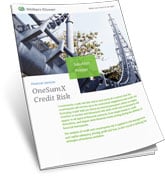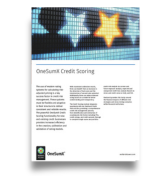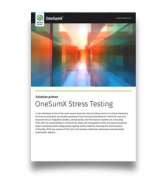Benefits of our Credit Risk software solution
Basel IV has changed the way banks need to address the impact of credit risk. To comply with regulatory requirements such as Basel IV you’ll need to take a holistic view, and our software solution and services enable just that.
OneSumX Credit Risk calculates credit, debt and funding valuation adjustment. It takes an integrated approach to explore the correlation between credit, market and behavioral risk. It also identifies and estimates the degree of systemic and concentration risk based on counterparty risk and credit exposure analysis.






